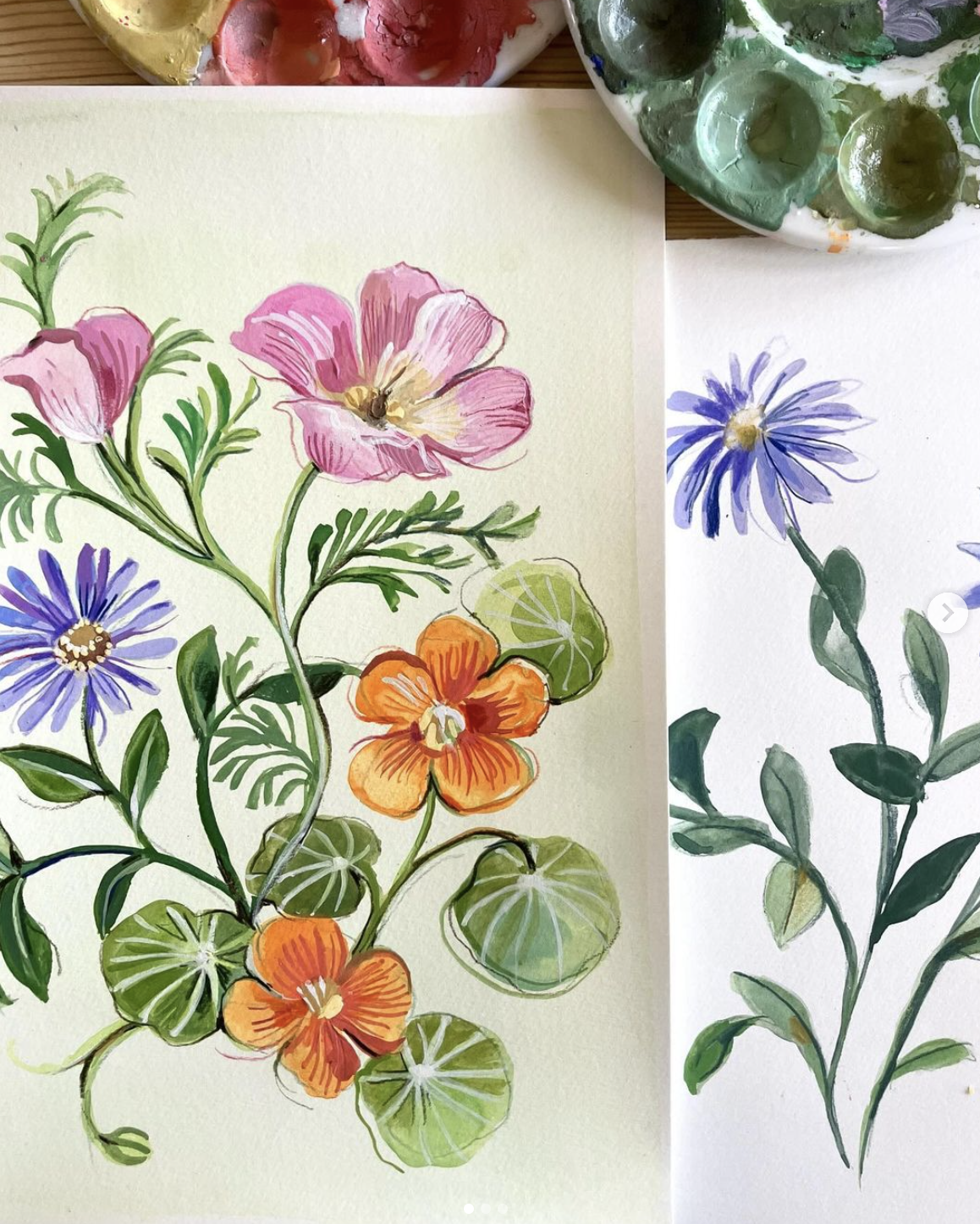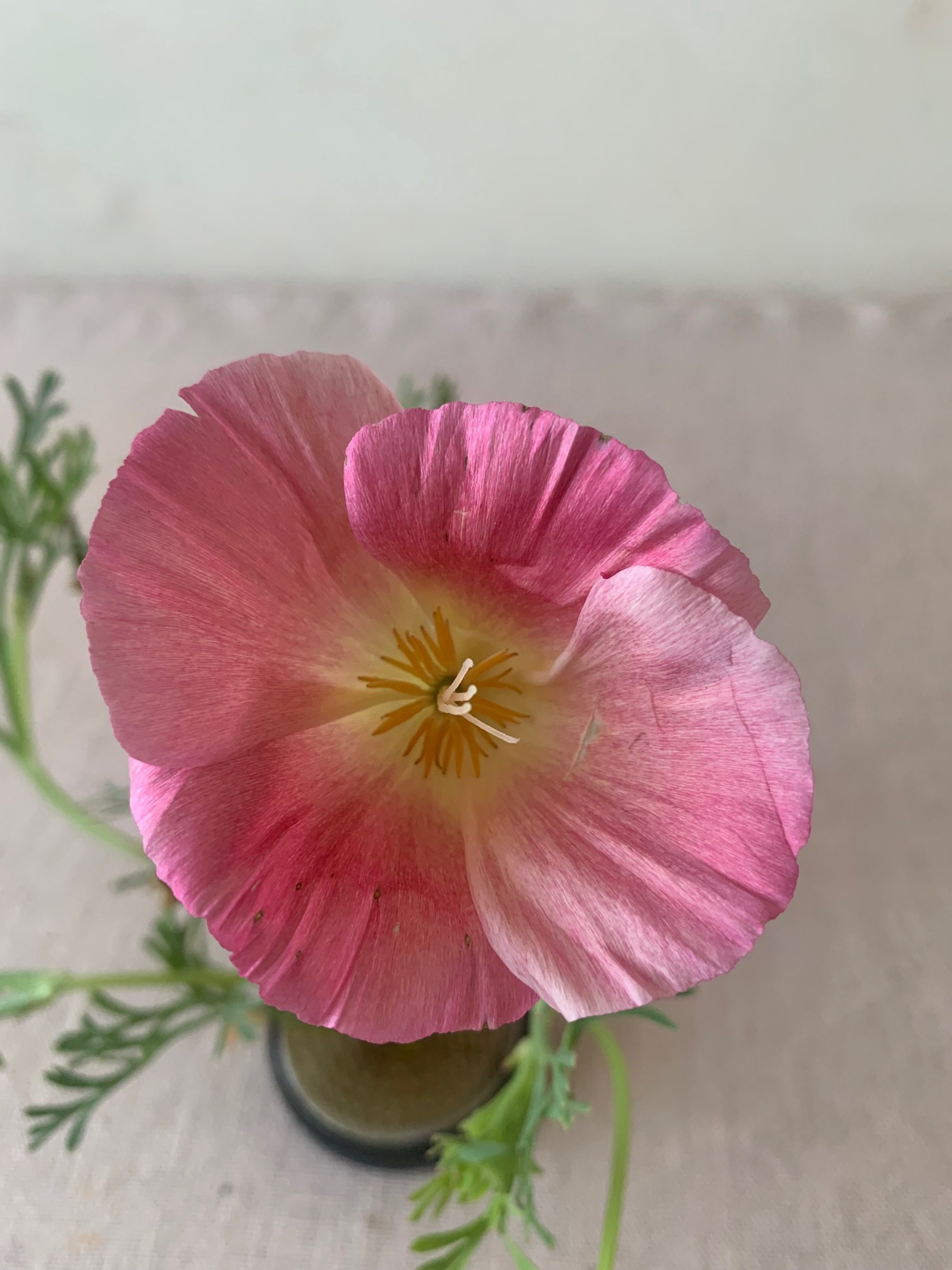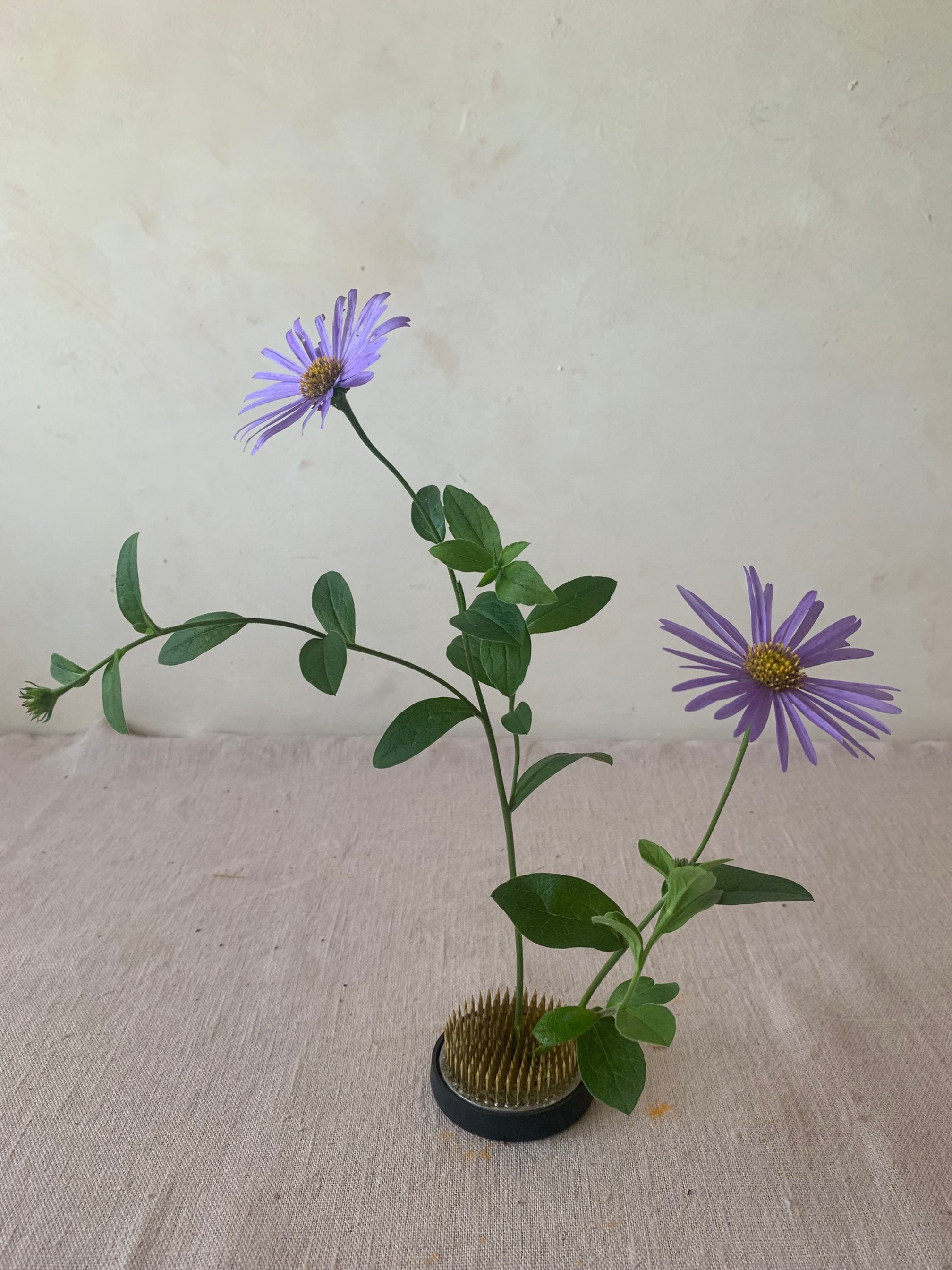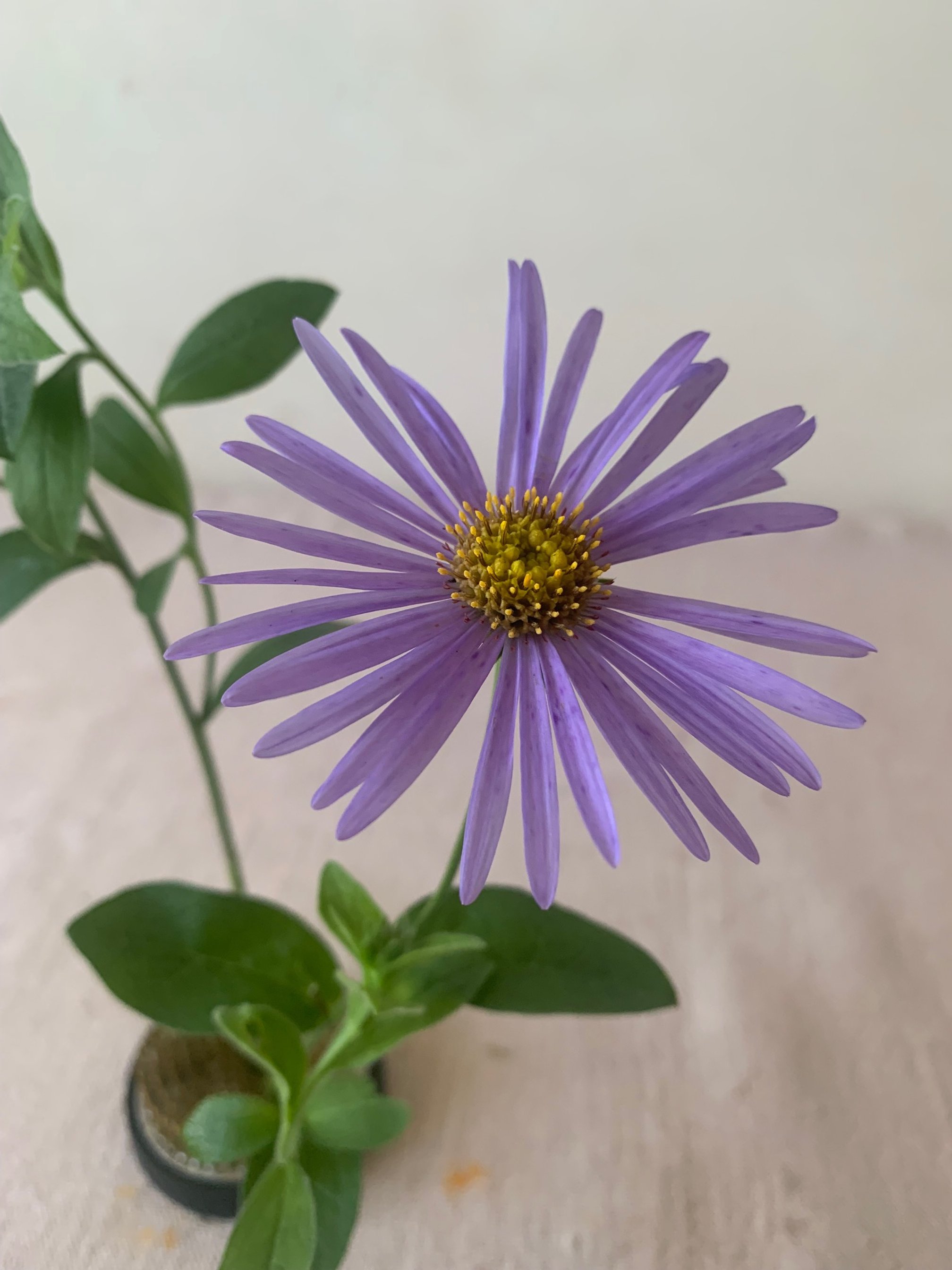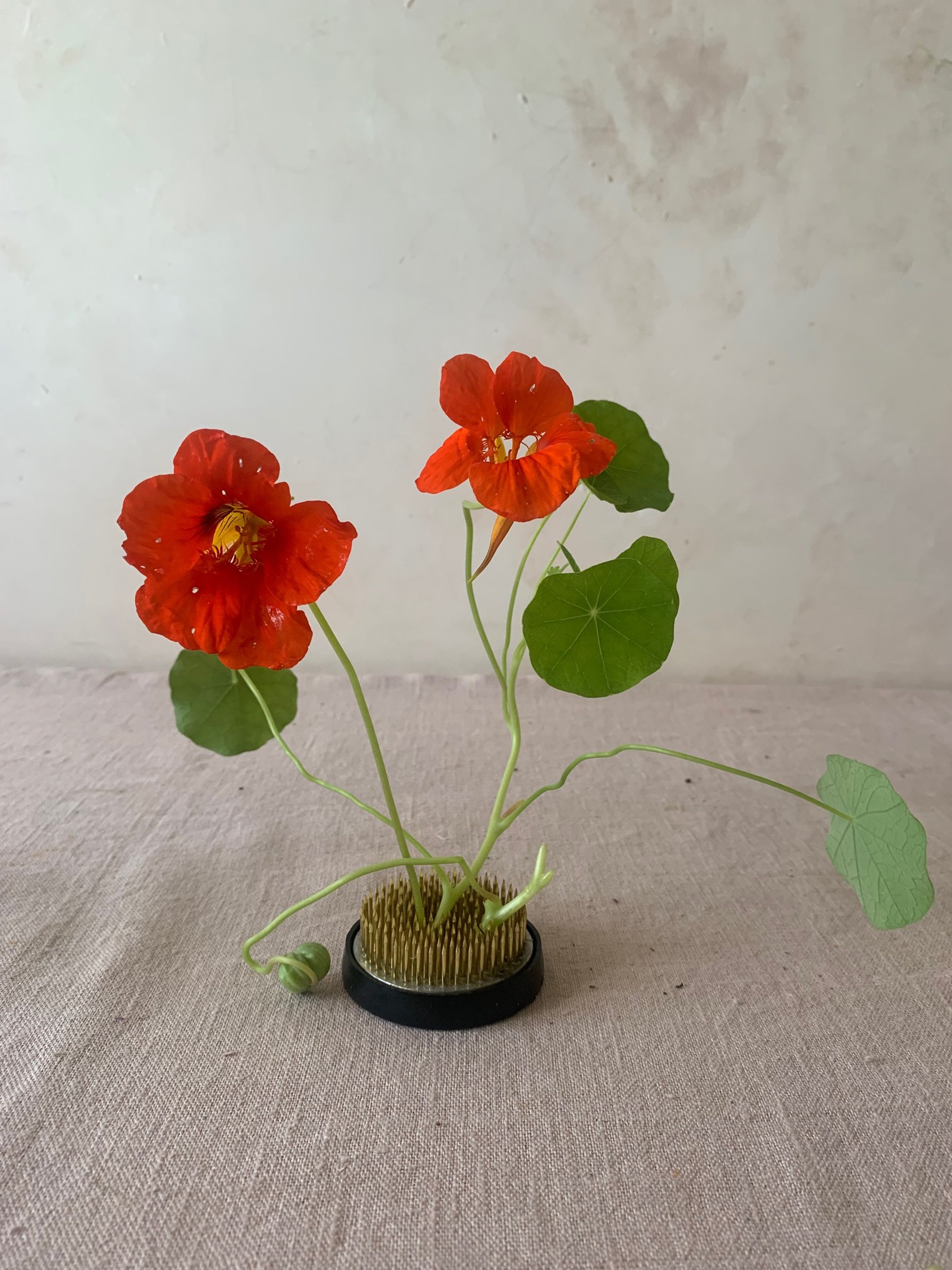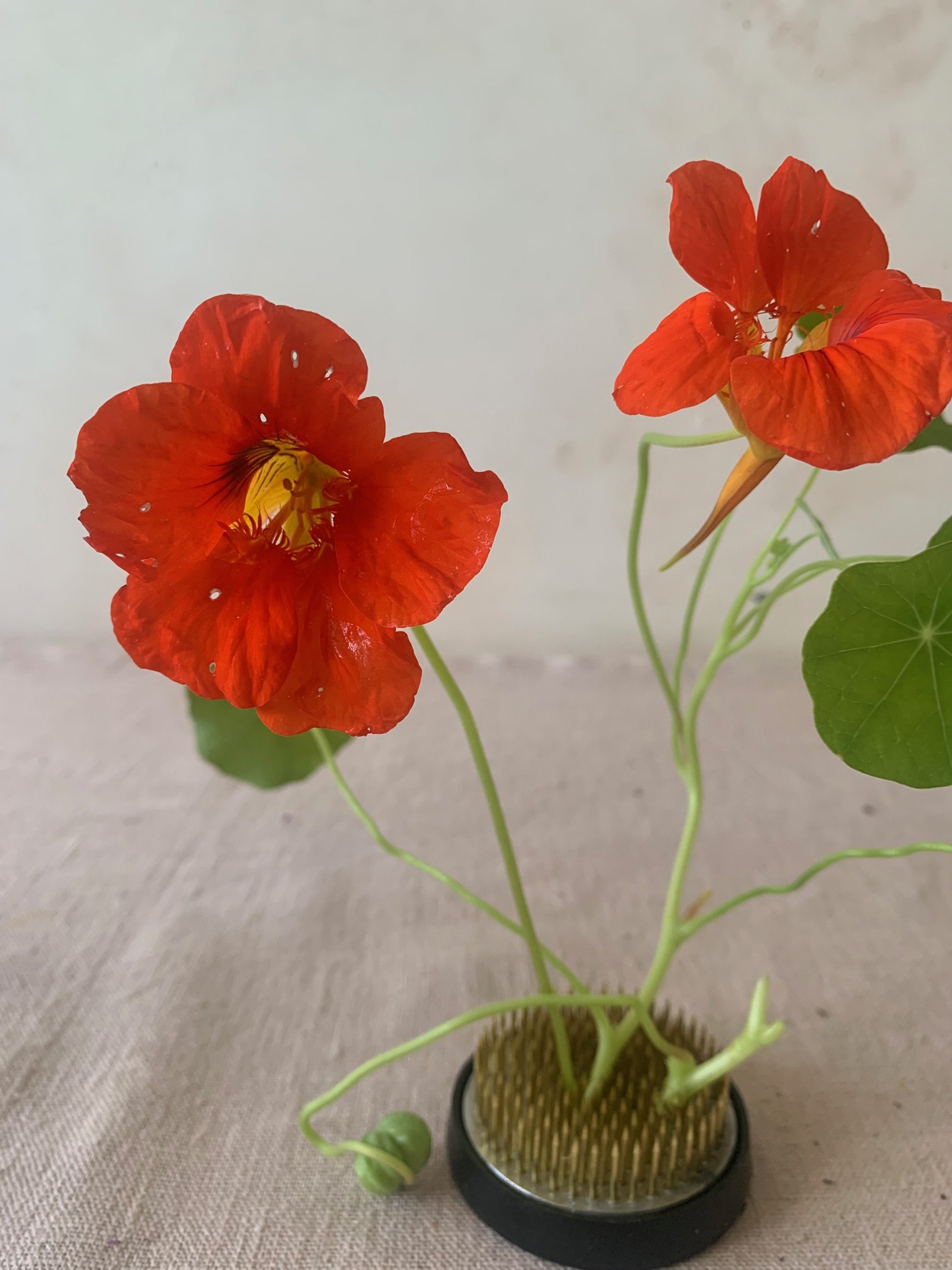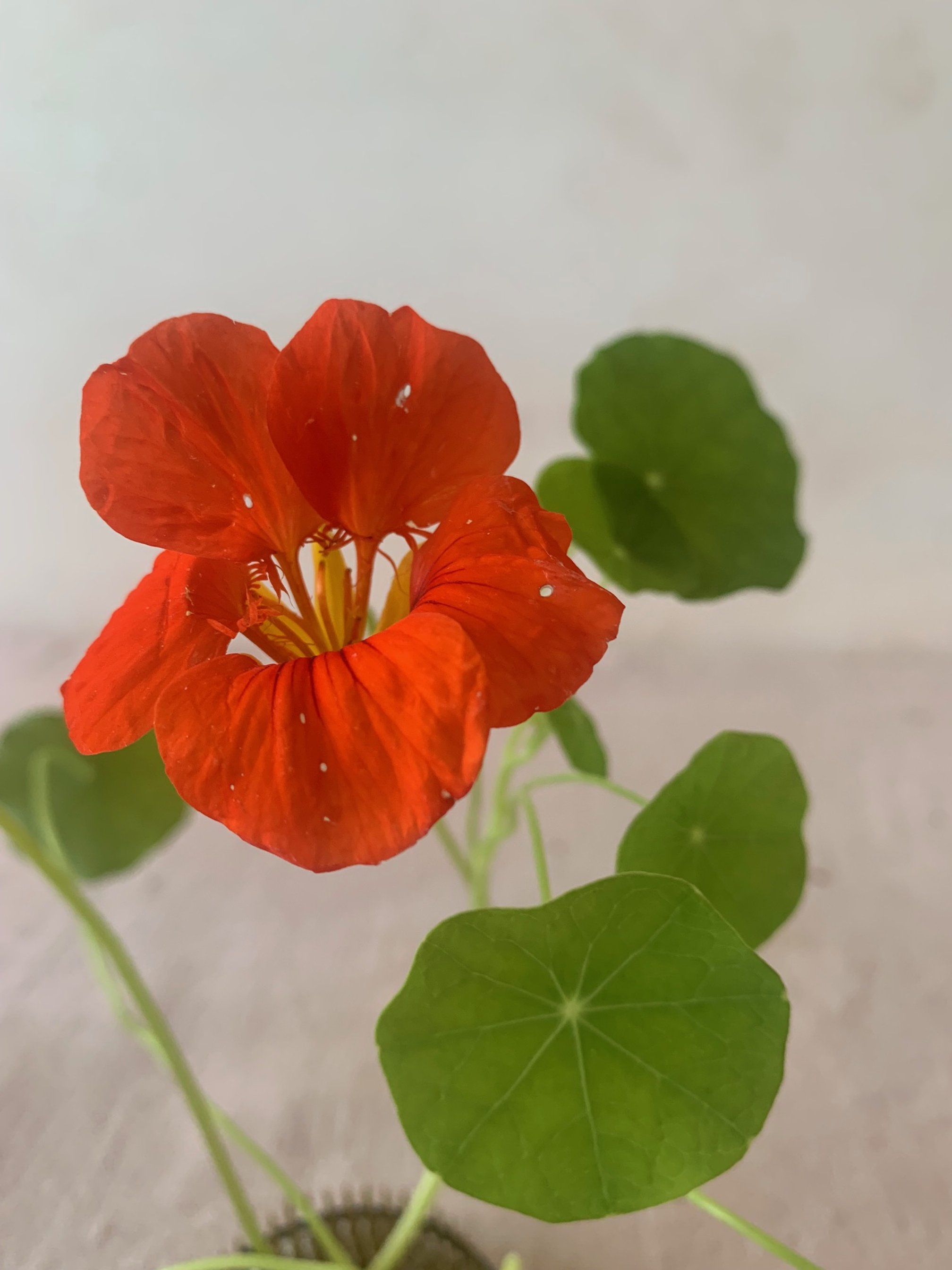Gouache and water colour pencils with Clare Therese Gray, 17th Sept 2024
All levels are welcome.
Once downloaded to your device this recording is yours to keep and will not expire.
* This a recorded class on Zoom so the quality of the video can vary *
Please scroll along the pictures to see close up’s of the real flowers we painted - you will need to have access to these during the class so take screen shots or print them out.
Materials list from Clare which you will need….
PAPER
Bring lots of paper in any size you wish, including some scrap paper. Any paper that can handle water is suitable and this includes:
• Basic Cartridge paper – ideally 150gsm or heavier ( I like to use this Cass Art Paper)
• A4 Watercolour paper – I prefer smooth (hot press) paper as the lack of texture makes for a cleaner scan but cold press is absolutely fine if you prefer.
There is a wide range of price/quality when it comes to watercolour paper, I most often use this one for quality and value: Cass Art hot press pad of 50 sheets
BRUSHES
I mainly use round brushes in a mix of sizes (larger are great for shapes, smaller for details). Brush brands are also very much subject to your personal preference. The key is to have a range and not to be at all put off if you don’t have the exact one I describe – just use the closest thing you find to hand.For the class I’ll stick to a size 3, 1 and 00 by Winsor & Newton.
I also use a 1’ wash brush like this for creating washy or coloured back grounds, but a cheap version like this will be absolutely fine too.
COLOURED PENCILS
For initial drawing I tend to use a light brown/ or juniper green water colour pencil so that the colour blends into the paint.
A range of either watercolour or plain coloured pencils will be fine.
PAINT
We are going to be learning the quick basics of gouache paint so it really does help to have a selection to start you off. My preferred brand of paint is Designers Gouache by Winsor & Newton. I find it to be of good quality, but also affordable and it is easily available online and in plenty of art stores.
There is no right or wrong brand to use and several other great quality ones are available such as Holbein, Schminke, Hordem, Caran D’Ache and Royal Talens. It is entirely down to personal preference which brand you go for. CassArt often has great deals on sets of paint, so can be worth a look if you want multiple colours.
When starting out and to get a really varied selection of hues, I would suggest getting your hands on a ‘warm’ and a ‘cool’ of each of the primary colours, red, yellow and blue.
Examples of these might be:
WARM: Red - Cadmium Red, Winsor RedYellow - Cadmium Yellow, Spectrum Yellow Blue - Ultramarine Blue , Winsor BlueCOOL: RED - Alizarin Crimson, Spectrum CrimsonYellow - Lemon Yellow, Hansa Yellow Light Blue - Phthalo Blue,Prussian Blue
Several ‘earth’ colours such as: Burnt Umber, Burnt Sienna, Yellow Ochre, Olive Green
Black
White (I tend to buy the larger tubes as I get through a lot!)
Other additional premixed brights; Cobalt Turquoise Light and Opera Pink which are not strictly necessary but create extraordinary vibrancy and are a joyful addition to any set.
Don’t worry if you already have a nice set of gouache paints with slightly different colour names, many can be easily substituted and a quick online search will give you a ready list. An example of a colour I have used is Phthalo blue, but Winsor Blue, Monastral Blue, Prussian Blue or Indanthrene Blue would all make a fine substitute and you will come out with a very similar result in your painting.
PALETTE
I use one of those basic round plastic palettes with 10 small wells around a larger central one, the like of which you can find easily in any art supplies store or online. However, I often run out of clean ones and use anything from plates to pencil tins as palettes, which wash just as nicely and store well.
OTHER USEFUL STUFF
- Paper towels: for blotting and cleaning brushes
- Pot or two of water
All levels are welcome.
Once downloaded to your device this recording is yours to keep and will not expire.
* This a recorded class on Zoom so the quality of the video can vary *
Please scroll along the pictures to see close up’s of the real flowers we painted - you will need to have access to these during the class so take screen shots or print them out.
Materials list from Clare which you will need….
PAPER
Bring lots of paper in any size you wish, including some scrap paper. Any paper that can handle water is suitable and this includes:
• Basic Cartridge paper – ideally 150gsm or heavier ( I like to use this Cass Art Paper)
• A4 Watercolour paper – I prefer smooth (hot press) paper as the lack of texture makes for a cleaner scan but cold press is absolutely fine if you prefer.
There is a wide range of price/quality when it comes to watercolour paper, I most often use this one for quality and value: Cass Art hot press pad of 50 sheets
BRUSHES
I mainly use round brushes in a mix of sizes (larger are great for shapes, smaller for details). Brush brands are also very much subject to your personal preference. The key is to have a range and not to be at all put off if you don’t have the exact one I describe – just use the closest thing you find to hand.For the class I’ll stick to a size 3, 1 and 00 by Winsor & Newton.
I also use a 1’ wash brush like this for creating washy or coloured back grounds, but a cheap version like this will be absolutely fine too.
COLOURED PENCILS
For initial drawing I tend to use a light brown/ or juniper green water colour pencil so that the colour blends into the paint.
A range of either watercolour or plain coloured pencils will be fine.
PAINT
We are going to be learning the quick basics of gouache paint so it really does help to have a selection to start you off. My preferred brand of paint is Designers Gouache by Winsor & Newton. I find it to be of good quality, but also affordable and it is easily available online and in plenty of art stores.
There is no right or wrong brand to use and several other great quality ones are available such as Holbein, Schminke, Hordem, Caran D’Ache and Royal Talens. It is entirely down to personal preference which brand you go for. CassArt often has great deals on sets of paint, so can be worth a look if you want multiple colours.
When starting out and to get a really varied selection of hues, I would suggest getting your hands on a ‘warm’ and a ‘cool’ of each of the primary colours, red, yellow and blue.
Examples of these might be:
WARM: Red - Cadmium Red, Winsor RedYellow - Cadmium Yellow, Spectrum Yellow Blue - Ultramarine Blue , Winsor BlueCOOL: RED - Alizarin Crimson, Spectrum CrimsonYellow - Lemon Yellow, Hansa Yellow Light Blue - Phthalo Blue,Prussian Blue
Several ‘earth’ colours such as: Burnt Umber, Burnt Sienna, Yellow Ochre, Olive Green
Black
White (I tend to buy the larger tubes as I get through a lot!)
Other additional premixed brights; Cobalt Turquoise Light and Opera Pink which are not strictly necessary but create extraordinary vibrancy and are a joyful addition to any set.
Don’t worry if you already have a nice set of gouache paints with slightly different colour names, many can be easily substituted and a quick online search will give you a ready list. An example of a colour I have used is Phthalo blue, but Winsor Blue, Monastral Blue, Prussian Blue or Indanthrene Blue would all make a fine substitute and you will come out with a very similar result in your painting.
PALETTE
I use one of those basic round plastic palettes with 10 small wells around a larger central one, the like of which you can find easily in any art supplies store or online. However, I often run out of clean ones and use anything from plates to pencil tins as palettes, which wash just as nicely and store well.
OTHER USEFUL STUFF
- Paper towels: for blotting and cleaning brushes
- Pot or two of water
All levels are welcome.
Once downloaded to your device this recording is yours to keep and will not expire.
* This a recorded class on Zoom so the quality of the video can vary *
Please scroll along the pictures to see close up’s of the real flowers we painted - you will need to have access to these during the class so take screen shots or print them out.
Materials list from Clare which you will need….
PAPER
Bring lots of paper in any size you wish, including some scrap paper. Any paper that can handle water is suitable and this includes:
• Basic Cartridge paper – ideally 150gsm or heavier ( I like to use this Cass Art Paper)
• A4 Watercolour paper – I prefer smooth (hot press) paper as the lack of texture makes for a cleaner scan but cold press is absolutely fine if you prefer.
There is a wide range of price/quality when it comes to watercolour paper, I most often use this one for quality and value: Cass Art hot press pad of 50 sheets
BRUSHES
I mainly use round brushes in a mix of sizes (larger are great for shapes, smaller for details). Brush brands are also very much subject to your personal preference. The key is to have a range and not to be at all put off if you don’t have the exact one I describe – just use the closest thing you find to hand.For the class I’ll stick to a size 3, 1 and 00 by Winsor & Newton.
I also use a 1’ wash brush like this for creating washy or coloured back grounds, but a cheap version like this will be absolutely fine too.
COLOURED PENCILS
For initial drawing I tend to use a light brown/ or juniper green water colour pencil so that the colour blends into the paint.
A range of either watercolour or plain coloured pencils will be fine.
PAINT
We are going to be learning the quick basics of gouache paint so it really does help to have a selection to start you off. My preferred brand of paint is Designers Gouache by Winsor & Newton. I find it to be of good quality, but also affordable and it is easily available online and in plenty of art stores.
There is no right or wrong brand to use and several other great quality ones are available such as Holbein, Schminke, Hordem, Caran D’Ache and Royal Talens. It is entirely down to personal preference which brand you go for. CassArt often has great deals on sets of paint, so can be worth a look if you want multiple colours.
When starting out and to get a really varied selection of hues, I would suggest getting your hands on a ‘warm’ and a ‘cool’ of each of the primary colours, red, yellow and blue.
Examples of these might be:
WARM: Red - Cadmium Red, Winsor RedYellow - Cadmium Yellow, Spectrum Yellow Blue - Ultramarine Blue , Winsor BlueCOOL: RED - Alizarin Crimson, Spectrum CrimsonYellow - Lemon Yellow, Hansa Yellow Light Blue - Phthalo Blue,Prussian Blue
Several ‘earth’ colours such as: Burnt Umber, Burnt Sienna, Yellow Ochre, Olive Green
Black
White (I tend to buy the larger tubes as I get through a lot!)
Other additional premixed brights; Cobalt Turquoise Light and Opera Pink which are not strictly necessary but create extraordinary vibrancy and are a joyful addition to any set.
Don’t worry if you already have a nice set of gouache paints with slightly different colour names, many can be easily substituted and a quick online search will give you a ready list. An example of a colour I have used is Phthalo blue, but Winsor Blue, Monastral Blue, Prussian Blue or Indanthrene Blue would all make a fine substitute and you will come out with a very similar result in your painting.
PALETTE
I use one of those basic round plastic palettes with 10 small wells around a larger central one, the like of which you can find easily in any art supplies store or online. However, I often run out of clean ones and use anything from plates to pencil tins as palettes, which wash just as nicely and store well.
OTHER USEFUL STUFF
- Paper towels: for blotting and cleaning brushes
- Pot or two of water

